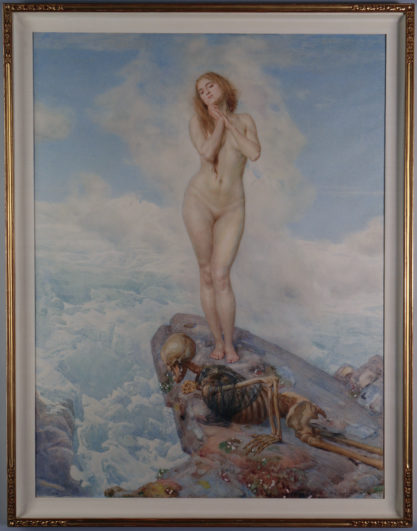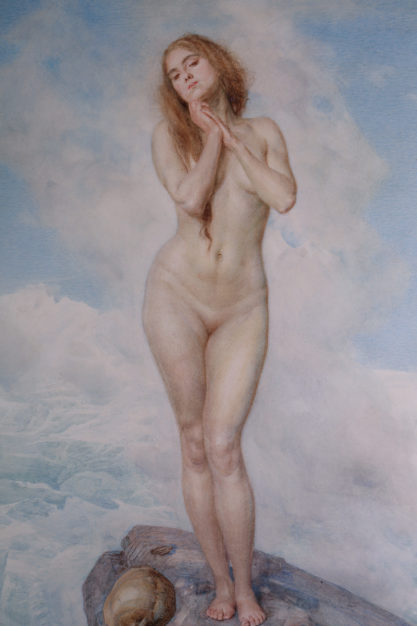


Imbuing Botticelli’s Birth of Venus with early 20th century anxieties about the increasing independence of the New Woman, this beautiful large format symbolist watercolor painting by the important Austrian artist Paul Grabwinkler (Wien, 1880 – 1946) shows a luscious nude on the cliffs with a skeleton at her feet. The clouds beneath her evoke classic Grecian mythology, and the haunting juxtaposition of life and death place the work in the tradition of Gothic romanticism. The darkly allegorical nature of the work is typical of Grabwinkler’s work, which mixed classical imagery, post Impressionist style, and dark early modernist notes. Grabwinkler studied at the historic Wiener Kunstgewerbeschule and began his career as part of the Vienna secessionist / Jugendstil movement. His work was featured at a Kunstlerhaus Jubilaums exhibition in Vienna in 1908. The artist went on to become a professor at the school of applied arts in Vienna for much of his career. Painting is handsomely framed and lined under plexiglass in a period ornate cornered gold gilt frame.


The motif of the maiden and the skeleton or skull was hugely popular in the early 20th century, modernizing traditional “Memento Mori” art–which reminded the viewer of the inevitability of death and seductive power of sin–to reflect the great fear of the day; the New Woman. As women became more visible outside the home in the industrializing world, and cosmetics, bicycles, and other tokens of modernity began being used by the younger generation to assert their independence, images of the femme fatale in consort with death began appearing all over. Both alluring and frightening, these depictions were perhaps the perfect metaphor for the shock these pioneering modern women gave to the old order.




